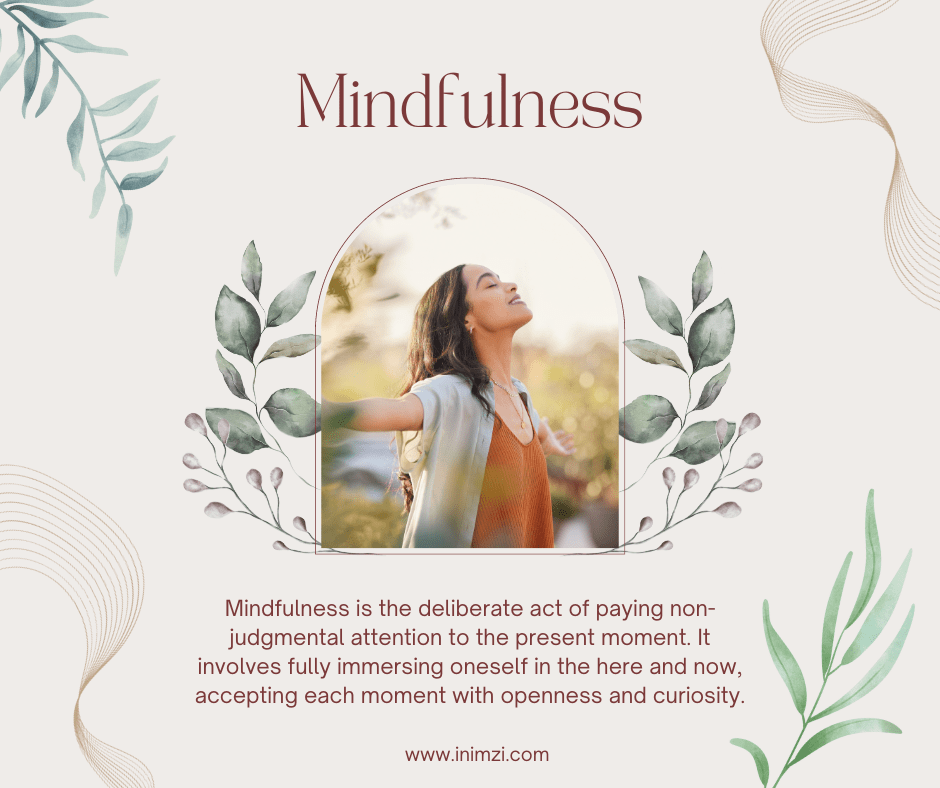The Art of Mindfulness and Present Moment Awareness
In a world characterized by constant stimulation and rapid pace, finding solace and clarity has become increasingly vital. Enter mindfulness and present moment awareness – two practices that offer a sanctuary amid the chaos, allowing individuals to reconnect with themselves and the world around them.
Unveiling Mindfulness and Present Moment Awareness
Mindfulness can be defined as the deliberate act of paying non-judgmental attention to the present moment. It involves fully immersing oneself in the here and now, accepting each moment with openness and curiosity. Mindfulness is a mental state that invites conscious observation of thoughts, feelings, bodily sensations, and the environment without trying to change or control them.
Present moment awareness is closely intertwined with mindfulness but focuses more specifically on being fully attuned to the current instant. It involves setting aside past regrets and future worries, embracing the immediacy of the now. By being present, individuals can cultivate a deep sense of connection with themselves and their surroundings.
The Importance of Mindfulness and Present Moment Awareness
- Reduced Stress: In a world where stress is ubiquitous, mindfulness and present moment awareness offer a refuge. These practices encourage individuals to step away from the mental burdens of past regrets and future anxieties, promoting a state of calm and relaxation.
- Enhanced Well-Being: Mindfulness and present moment awareness foster a heightened awareness of emotions and bodily sensations. By acknowledging these experiences without judgment, individuals can develop a better understanding of themselves, leading to improved emotional well-being.
- Improved Focus and Concentration: Our minds are often scattered, jumping from one thought to another. Engaging in mindfulness helps train the mind to focus on the present task, leading to increased concentration and productivity.
- Deeper Connections: Mindfulness cultivates an authentic connection with others. By truly being present in conversations and interactions, individuals can listen more attentively and respond with greater empathy.
- Enhanced Coping Mechanisms: The ability to stay present enables individuals to respond to challenges with clarity and composure. This, in turn, improves problem-solving skills and the capacity to handle adversity effectively.
Techniques for Integrating Mindfulness and Present Moment Awareness
- Mindful Breathing: Focus your attention on your breath, observing its rhythm and sensations as you inhale and exhale. Whenever your mind starts to wander, gently redirect it back to your breath.
- Body Scan Meditation: Close your eyes and mentally scan your body from head to toe, paying attention to any areas of tension or discomfort. Bring your awareness to each body part without judgment.
- Mindful Observation: Choose an object, whether it’s a flower, a piece of fruit, or even a mundane item. Observe it closely, noticing its texture, colors, and any other details you might overlook.
- Walking Meditation: While walking, focus on the sensation of each step. Feel your feet making contact with the ground, the movement of your legs, and the rhythm of your breath.
- Mindful Eating: Slow down and savor each bite of your meal. Pay attention to the flavors, textures, and smells. This practice encourages a deeper connection with the act of nourishing your body.
- Journaling: Set aside time each day to write down your thoughts and observations. This practice can help you become more aware of your internal experiences and emotions.
- Technology Breaks: Designate moments throughout the day to disconnect from digital devices. Use this time to engage with your surroundings and the people around you.
Real-Life Applications of Mindfulness and Present Moment Awareness
- Meditation Practices: Meditation is a cornerstone of mindfulness and present moment awareness. Techniques such as Vipassana and Zen meditation focus on observing thoughts and sensations without attachment, fostering deep self-awareness.
- Yoga: Yoga combines physical movement with mindfulness. Practitioners are encouraged to stay present and focused on their breath as they move through poses, cultivating a mind-body connection.
- Nature Immersion: Spending time in nature provides an opportunity to engage in present moment awareness. The sights, sounds, and sensations of the natural world can ground individuals in the here and now.
By intentionally redirecting our attention to the present moment, we unlock the potential for reduced stress, improved well-being, and enhanced focus. Through techniques like mindful breathing, body scanning, and mindful observation, we can integrate these practices into our daily lives. As we cultivate mindfulness, we unearth a profound connection with ourselves, others, and the world – ultimately leading to a more meaningful and fulfilling existence.
